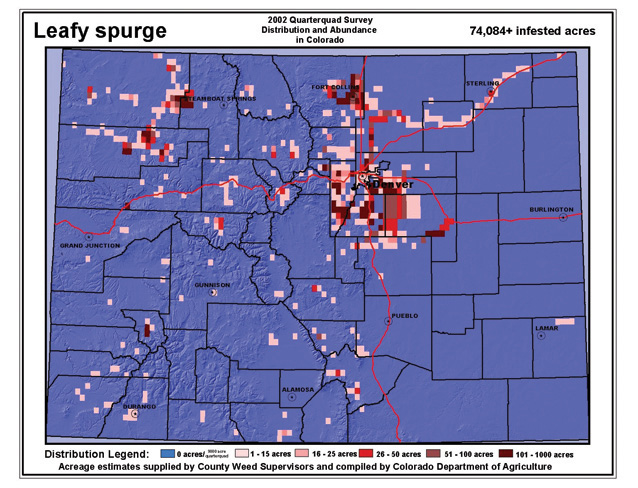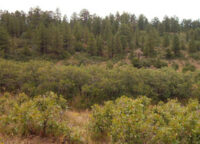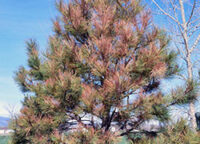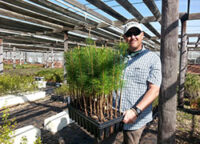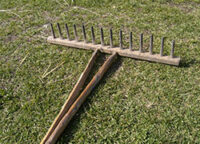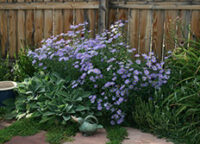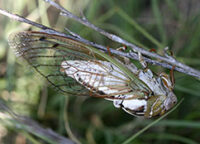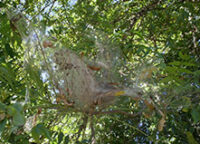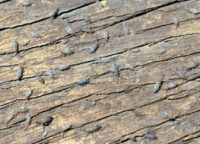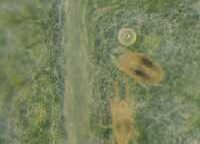- 08, 03, 2015
- No Comments.
- By admin
Leafy Spurge – 3.107
Print this fact sheet by K.G. Beck* (11/13) Quick Facts… Leafy spurge (Euphorbia esula L.) is a creeping perennial that reproduces from seed and vegetative root buds. It can reduce cattle carrying capacity of rangeland or pastures by 50 to 75 percent. Leafy spurge is difficult to control. Its extensive root system has vast nutrient […]
Take a Tour- 08, 03, 2015
- No Comments.
- By admin
Gambel Oak Management – 6.311
Print this fact sheet by N. Jester, K. Rogers, and F.C. Dennis* (6/12) Quick Facts… Gambel oak is commonly found throughout western Colorado between 6,000 and 9,000 feet in elevation. Recurring fires often cause oak stands to develop into large thickets; younger thickets created in this way can become exceptionally dense and almost impenetrable for […]
Take a Tour- 08, 03, 2015
- No Comments.
- By admin
Winter Drying is a Likely Cause of Brown Pine Needles
Bill Ciesla Colorado State University Extension Master Gardener in Larimer County April 5, 2015 During the past winter, the needles of many pines growing in Fort Collins and surrounding communities have turned a sickly red-brown color. While several factors may be involved, a likely cause of the discoloration is a condition known as winter drying. […]
Take a Tour- 08, 03, 2015
- No Comments.
- By admin
A Tree Grows in Fort Collins: A Look at the Colorado State Forest Service Nursery
Anne Wuerslin Colorado State University Extension Master Gardener in Larimer County May 23, 2015 There’s a not-so-secret treasure trove of trees right in the northwestern foothills of Fort Collins. This local gem is the Colorado State Forest Service (CSFS) Nursery, located at 3843 LaPorte Avenue, Bldg 1060 at the Colorado State University Foothills Campus. It […]
Take a Tour- 08, 03, 2015
- No Comments.
- By admin
Late Winter Garden and Lawn Care
Dick Christensen Colorado State University Extension Master Gardener in Larimer County February 21, 2015 Garden catalogs have arrived and gardeners are starting to get the itch to get started. The Front Range has had its share of warm days, but resist the urge to start digging in flower and garden beds too early, to avoid […]
Take a Tour- 07, 31, 2015
- No Comments.
- By admin
Now is the Time for Perennials
Sally Weisser Colorado State University Extension Master Gardener in Larimer County June 13, 2015 Perennials are the mainstay of gardens everywhere and now is the perfect time to plant them. They are rewarding to grow, and unlike annuals, they return every year. They come in all shapes, sizes, colors with various foliage textures and colors. […]
Take a Tour- 07, 30, 2015
- No Comments.
- By admin
Cicadas – 5.590
Print this fact sheet by W.S. Cranshaw and B. Kondratieff* (2/19) Quick Facts… Figure 1: Megatibicen dealbatus, a large “dog-day” type of cicada that is expanding populations along the Front Range.. Figure 2: Cicada nymph recently emerged from the soil, preparing to molt to the adult form. Figure 3: Cicada adult that has recently molted. […]
Take a Tour- 07, 29, 2015
- No Comments.
- By
Insect Control: Horticultural Oils – 5.569
Print this fact sheet by W.S. Cranshaw and B. Baxendale * (12/13) Quick Facts… Certain oils, diluted with water and applied as sprays, can be effective controls of many plant pests. Horticultural oils are usually highly refined petroleum oils combined with an emulsifiying agent. Some plant-derived oils also are used. Advantages of oils include safety, […]
Take a Tour- 07, 29, 2015
- No Comments.
- By
Springtails – 5.602
Print this fact sheet by W. Cranshaw* (12/12) Quick Facts… Springtails cannot bite and they are harmless to humans and larger animals. During hot, dry periods in summer springtails sometimes migrate from lawns and outdoor areas to homes. Springtails tend to be fairly resistant to most insecticides and migrations can involve continuous movement of new […]
Take a Tour- 07, 29, 2015
- No Comments.
- By
Spider Mites – 5.507
Print this fact sheet by W.S. Cranshaw and D.C. Sclar* (7/14) Quick Facts… Spider mites are common plant pests. Symptoms of injury include flecking, discoloration (bronzing) and scorching of leaves. Injury can lead to leaf loss and even plant death. Natural enemies include small lady beetles, predatory mites, minute pirate bugs, big-eyed bugs and predatory […]
Take a Tour
